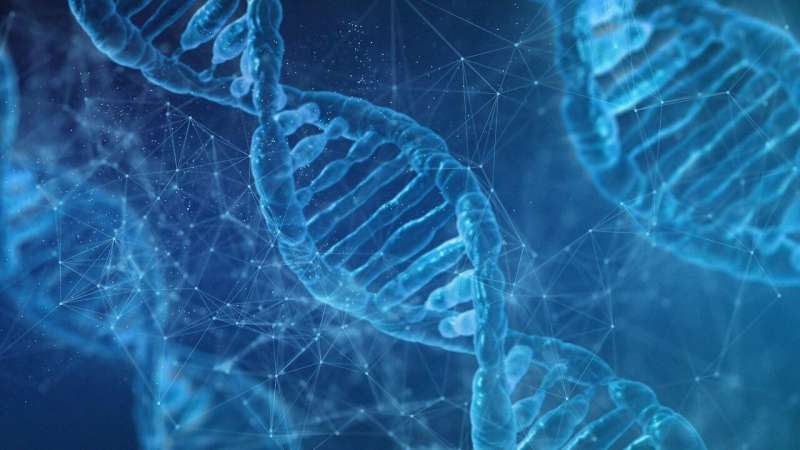
Credit: Pixabay/CC0 Public Domain
Rice University researchers are making progress in understanding how chromosome structures evolve throughout the cell’s life cycle. Their study of the motorized processes that actively influence chromosome organization appears in the Proceedings of the National Academy of Sciences.
“This research advances our understanding of how motorized processes shape chromosomal structures and influence cellular functions,” said Peter Wolynes, co-author of the study and the D.R. Bullard-Welch Foundation Professor of Science. Wolynes is also a professor of chemistry, biosciences, physics and astronomy and co-director of the Center for Theoretical Biological Physics (CTBP).
The research presents two types of motorized chain models: swimming motors and wrestling motors. These motors play distinct roles in manipulating chromosome structure.
Swimming motors, similar to RNA polymerases (enzymes that copy DNA sequences into RNA), help expand and contract the chromatin fiber during gene decoding. Grappling motors bring distant segments of the chromatin fibers together, creating the long-range correlations needed to prevent chromosome knots from forming.
Motor proteins, which consume chemical energy, play a key role in shaping chromosome architecture. The researchers studied the impact of these proteins on ideal polymer chains.
They found that swimming motors can cause contraction or expansion depending on the forces applied. In contrast, grappling motors produce consistent long-range effects, consistent with patterns seen in Hi-C experiments, which identify chromatin interactions in the cell nucleus during interphase, a stage of the cell cycle when the cell is not dividing and chromosomes are decondensed and spread throughout the nucleus. The motors that do this are particularly weak and would easily get stuck when loops form, so the researchers looked for a way to speed them up.
“This study is remarkable for its use of theoretical modeling of chromosome chain organization by motor proteins,” said Zhiyu Cao, study co-author and graduate student at CTBP.
Using a statistical mechanics approach, the researchers created a consistent description that predicts the spatial distribution of loop extrusion probabilities. This model helped understand how the motors’ responses to the forces exerted by randomly flipping DNA can be overcome, so that they can still perform the packaging needed to insert the long chromosome chain into the microscopic cell nucleus.
The three-dimensional organization of chromosomes affects vital biological processes such as DNA replication and cell differentiation as embryos develop.
More information:
Zhiyu Cao et al, Motorized chain models of the ideal chromosome, Proceedings of the National Academy of Sciences (2024). DOI: 10.1073/pnas.2407077121
Quote:Researchers uncover key mechanisms in chromosome structure development (July 3, 2024) Retrieved July 3, 2024 from https://phys.org/news/2024-07-uncover-key-mechanisms-chromosome.html
This document is subject to copyright. Apart from any fair dealing for the purpose of private study or research, no part may be reproduced without written permission. The content is provided for informational purposes only.